REC articles are not the view or opinion of Alpha Extract Administrators
AVOID EXPOSING YOUR HARVEST TO STRONG SUNLIGHT (during drying)
Drying Herbs
Essential Oil Preservation for Maximum Potency
Fresh herbs are welcome in just about any kitchen, however, drying herbs to perfection is critical for use in the kitchen or for extracts purposes, i.e. health & beauty or medicine.
A lot of the dried herbs we buy at the grocers are often irradiated for preservation and well past their peak potency. Typically, these herbs have been mass produced in the field using conventional agricultural practices and harvesting methods.
Comparatively, after drying herbs carefully that have been homegrown, you may find the differences in your dishes or extracts simply “night and day” over commercial store bought.
Here’s what you need to know to harvest and dry your herbs for maximum potency, like a pro.
IMPORTANT Fundamentals:
- Rarely is it the plant itself giving you the flavour, fragrance or nutraceutical qualities you desire; it’s the resins and plant saps that usually hold these magical attributes you love.
- The aromatic and potentially medicinal qualities your plants hold in the resins are usually secreted via TRICHOMES; the specialized hair like structures on the outside of the plant.
- Not all trichomes are created equal; there are a few different types, often with different types on different plants parts—it’s usually the flowering parts that have the highest concentration of resin secreting trichomes.
Be Gentle
Trichomes (notice the dried resin capped trichomes in photo BELOW) are delicate, especially when dry. Rough handling when drying herbs can break off these tiny and potent parts of the plant that often hold the qualities of the crop harvest. Also note that in some types of herbs, most of the resin covered trichomes are found in highest concentrations around flower bracts).
Essential oils and the aromatic compounds they contain are also delicate—but in a different way. They have a life cycle too; similar to a plants lifecycle where there is such a thing as peak maturity. Lots of air movement or excessive heat will damage the quality of the aromatic compounds in the harvest—therefore, drying herbs is not a process to be rushed.
Aging Resins & Essential Oils
Usually for culinary purposes, the quality of your dried herbs (ie basil) will start to decline over time, highlighting the value of good storage (more on storing your harvest HERE)
However, in some instances some of the qualities may improve over time with careful storage and controlled exposure(s) to air. For example freshly extracted essential oils will often improve in terms of aromatic qualities after aging at room temperature in the dark for about a month or so. For example in spearmint oil extracted via steam distillation, when freshly produced there is a slight “burn” smell to the oil. After a month of careful storage this disappears leaving a very potent aromatic quality to the pure spearmint oil simply from being left to “breathe” for a short period.
Important: Strong light will hurt the quality of the resins and oils in your herbs and flowers after harvest—AVOID EXPOSING YOUR HARVEST TO STRONG SUNLIGHT during drying, curing and aging processes.
Curing Herbs
This is a different type of aging—one that is more immediate than we discussed above. As stressed previous, drying shouldn’t be a rushed process. In most basic terms, the initial process requires two important steps, and those are:
i) Drying, to remove the bulk of the moisture content to prevent spoilage when stored. This process usually lasts 4-7 days in most cases
and
ii) Curing, removing the “green” qualities in the aroma and flavour; i.e. dissipating “fresh” notes. To some extent, the resins and essential oils will take longer to cure than the plant material itself. This process usually lasts 10-30 days. A an Aging process as described above may also follow.
Is it Better to Hang Dry the Whole Plant versus Screen Drying?
This can be an area of debate amongst seasoned gardeners. There are some advantages to drying the whole plant, for example on lines like HERE
Advantages:
- helps slow drying process, can improve quality
- easier initial take down of crop
- simplified handling of plant material
- drying lines are easy to put up and are inexpensive
Disadvantages:
- plant material is brittle when handled further; some loss of resins
- requires a second round of intensive labour on top of initial harvest
TIP: Try harvesting whole branches, trimming away what you don’t want while fresh—hang the manicured branches from a line. This way, you get a lot of the advantages while cutting down on the disadvantages associated with drying whole plants.
Tags: drying herbs, essential oils, extracts, Hydroponics, urban agriculture
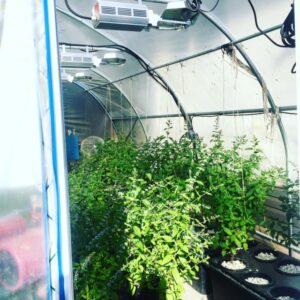
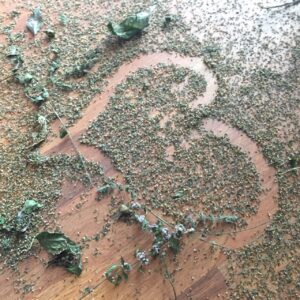
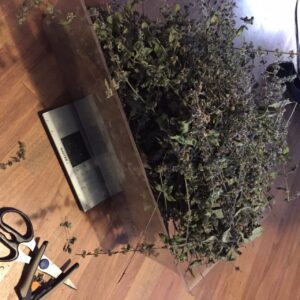
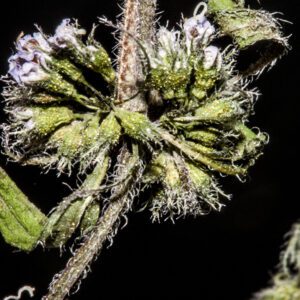
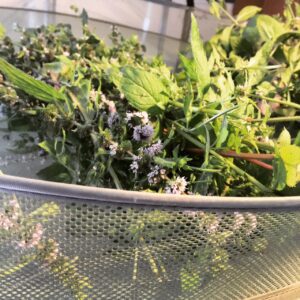
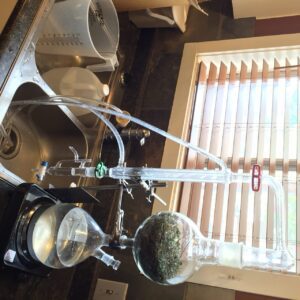
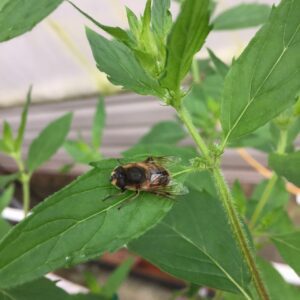
 Share On Facebook
Share On Facebook Tweet It
Tweet It

